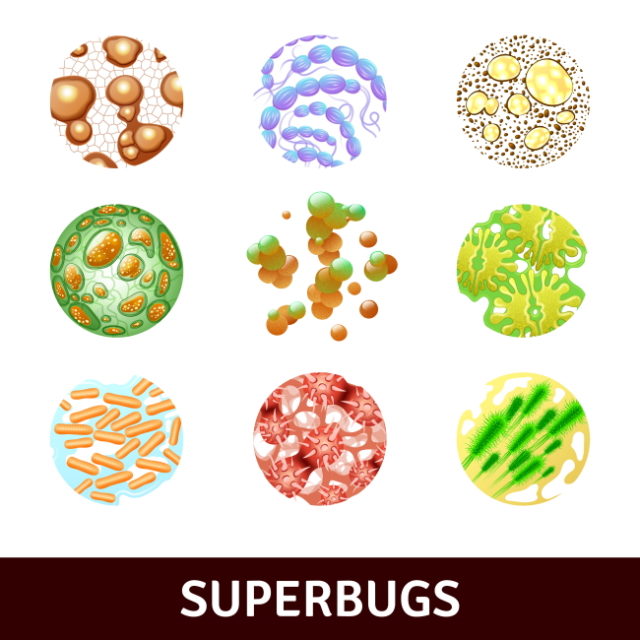
Often, superbugs are bacteria that have become resistant to antibiotics. They can also be fungi.
Antibiotics are a vital class of drugs that help save many lives. They treat a wide variety of infections, from mild urinary tract infections to life threatening sepsis.
However, the recent rise in superbugs is partly to do with the overuse of antibiotics, which contributes to antibiotic resistance.
There is no way to stop antibiotic resistance entirely, as it is part of the natural evolution of germs. Yet, it is essential for both doctors and patients to take steps to avoid antibiotic resistance.
In this article, learn more about antibiotic resistant germs, including how they have developed resistance and what we can do to prevent their spread.
What are superbugs?
A superbug refers to a germ that has formed resistance to multiple drugs that once treated the infection caused by the germ. The term “superbug” was developed by the media.
While any germ may become a superbug, bacterial and fungal strains that routinely infect humans, animals, and crops are most likely to do so.
As these bacteria and fungi adapt to the way a drug works, they may begin to resist treatment. Treating these infections may then take multiple doses of different and stronger drugs.
Antibiotic resistant infections lead to more than 35,000 deaths in the United States each year, according to the Centers for Disease Control and Prevention (CDC).
Antibiotic resistant bacteria may be more present in certain areas that require regular sterilization, such as hospitals and other healthcare facilities.
Regular sterilization is key to combating infections in these settings, but it may also be making some germs stronger.
In addition, these dangerous germs may be more present in some foods, such as in animal products that farmers have treated with antibiotics.
List
The CDC recently released a report called Antibiotic Resistance Threats in the United States, 2019, which classifies resistant germs based on risk.
The highest risk germs include:
- Clostridioides difficile
- Acinetobacter, which are resistant to a type of antibiotics called carbapenems
- Candida auris
- Enterobacteriaceae, which are resistant to carbapenems
- Neisseria gonorrhoeae
Doctors traditionally use carbapenems to treat severe or otherwise high risk bacterial infections.
Meanwhile, other infectious germs can pose serious threats to health, including drug resistant versions of:
- methicillin resistant Staphylococcus aureus, or MRSA, which causes staph infections
- some other types of Candida
- Streptococcus pneumoniae
- Mycobacterium tuberculosis, which causes tuberculosis
- some types of Salmonella
- vancomycin resistant Enterococci, or VRE
- Pseudomonas aeruginosa
- Shigella
- Campylobacter
The CDC report also includes a watch list of three pathogens that have the potential to become resistant and spread. These include:
- Aspergillus fumigatus, which are resistant to antifungal treatments called azoles
- Mycoplasma genitalium
- Bordetella pertussis
Hospitals are major sources of drug resistant infections. A certain group of bacteria cause most of the antibiotic resistant infections in hospital settings. This group, called the ESKAPE bacteria, includes:
- Enterococcus faecium
- S. aureus
- Klebsiella pneumoniae
- Acinetobacter baumannii
- P. aeruginosa
- Enterobacter species
Stronger strains of these bacteria have become antibiotic resistant and have little or no response to antibiotics.
Some have even developed resistance to sanitizers, such as the alcohol-based disinfectants that many hospitals use.
The authors of a 2018 scientific report noted that strains of E. faecium isolated after 2010 were 10 times more tolerant to alcohol disinfectants than older isolates.
The list above does not give a comprehensive picture of all of the potentially drug resistant pathogens. With regular exposure to antibiotic or antifungal treatments, almost any bacteria or fungi may develop resistance.
The pathogens listed above, however, currently pose the greatest threats to health.












